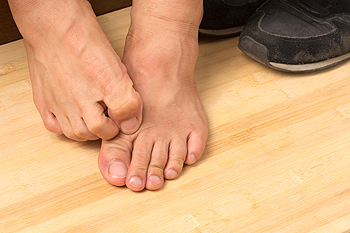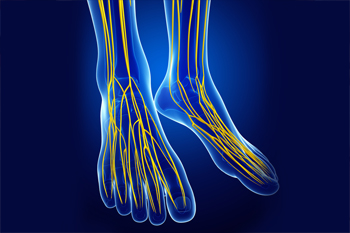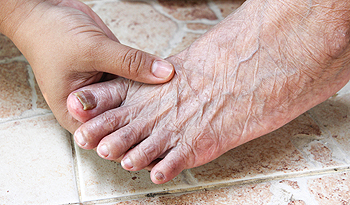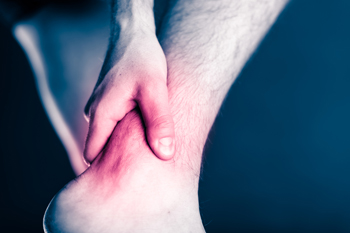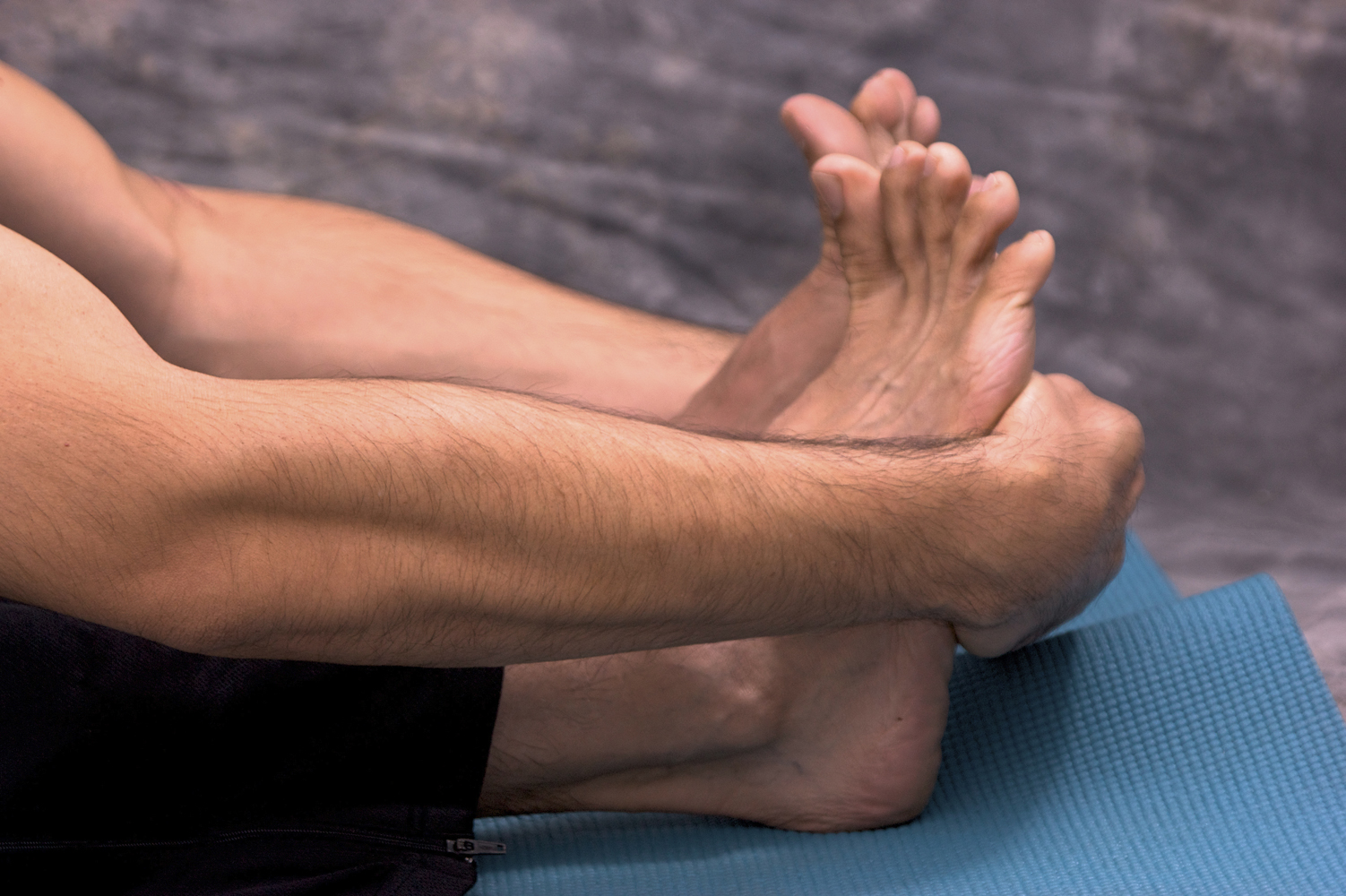Items filtered by date: August 2021
Treatments for Athlete’s Foot Blisters
Athlete’s foot is a fungal infection of the skin of the feet. It is characterized by a red, itchy, peeling rash on the soles of the feet or in between the toes. Athlete’s foot can also cause blisters to form on the feet. Athlete’s foot can be treated with both over-the-counter and prescription antifungal medications. Most over-the-counter medications are topical and applied directly to the skin. Prescription medications can be topical, such as antifungal creams and powders, or oral. Your doctor may also prescribe corticosteroid cream to reduce swelling and redness. If you have athlete’s foot, a podiatrist can help find the right treatment for you.
Athlete’s foot is an inconvenient condition that can be easily reduced with the proper treatment. If you have any concerns about your feet and ankles, contact Dr. Barbara Davis from Gilbert Podiatry. Our doctor will treat your foot and ankle needs.
Athlete’s Foot: The Sole Story
Athlete's foot, also known as tinea pedis, can be an extremely contagious foot infection. It is commonly contracted in public changing areas and bathrooms, dormitory style living quarters, around locker rooms and public swimming pools, or anywhere your feet often come into contact with other people.
Solutions to Combat Athlete’s Foot
- Hydrate your feet by using lotion
- Exfoliate
- Buff off nails
- Use of anti-fungal products
- Examine your feet and visit your doctor if any suspicious blisters or cuts develop
Athlete’s foot can cause many irritating symptoms such as dry and flaking skin, itching, and redness. Some more severe symptoms can include bleeding and cracked skin, intense itching and burning, and even pain when walking. In the worst cases, Athlete’s foot can cause blistering as well. Speak to your podiatrist for a better understanding of the different causes of Athlete’s foot, as well as help in determining which treatment options are best for you.
If you have any questions please feel free to contact our office located in Gilbert, PA . We offer the newest diagnostic and treatment technologies for all your foot and ankle needs.
Read more about Athlete's FootHow Is Tarsal Tunnel Syndrome Diagnosed?
Tarsal tunnel syndrome can occur when the posterior tibial nerve that runs along the back of the ankle is pinched due to swelling or trauma. This can lead to symptoms that may include tingling, numbness, burning, or shooting pain in the affected leg. While anybody can get tarsal tunnel syndrome, it most frequently affects adults, and particularly those who have arthritis and other systemic diseases or previous injuries to the ankle area. To diagnose this condition, a podiatrist may take your medical history, conduct a physical examination, and perform a nerve conduction study or EMG. Imaging studies, like MRIs, may be used to rule out other causes for your symptoms. If you are experiencing any lower limb pain, it is suggested that you see a podiatrist.
Tarsal tunnel syndrome can be very uncomfortable to live with. If you are experiencing tarsal tunnel syndrome, contact Dr. Barbara Davis of Gilbert Podiatry. Our doctor can provide the care you need to keep you pain-free and on your feet.
Tarsal Tunnel Syndrome
Tarsal tunnel syndrome, which can also be called tibial nerve dysfunction, is an uncommon condition of misfiring peripheral nerves in the foot. The tibial nerve is the peripheral nerve in the leg responsible for sensation and movement of the foot and calf muscles. In tarsal tunnel syndrome, the tibial nerve is damaged, causing problems with movement and feeling in the foot of the affected leg.
Common Cause of Tarsal Tunnel Syndrome
- Involves pressure or an injury, direct pressure on the tibial nerve for an extended period of time, sometimes caused by other body structures close by or near the knee.
- Diseases that damage nerves, including diabetes, may cause tarsal tunnel syndrome.
- At times, tarsal tunnel syndrome can appear without an obvious cause in some cases.
The Effects of Tarsal Tunnel Syndrome
- Different sensations, an afflicted person may experience pain, tingling, burning or other unusual sensations in the foot of the affected leg.
- The foot muscles, toes and ankle become weaker, and curling your toes or flexing your foot can become difficult.
- If condition worsens, infections and ulcers may develop on the foot that is experiencing the syndrome.
A physical exam of the leg can help identify the presence of tarsal tunnel syndrome. Medical tests, such as a nerve biopsy, are also used to diagnose the condition. Patients may receive physical therapy and prescriptive medication. In extreme cases, some may require surgery.
If you have any questions please feel free to contact our office located in Gilbert, PA . We offer the newest diagnostic and treatment technologies for all your foot and ankle needs.
How Can Older Adults Keep Their Feet Healthy?
As the body ages, a variety of foot conditions are more likely to develop. For example, foot pads can thin out, nails can become brittle, skin and tissues may lose elasticity, arches can sag, and circulation problems can lead to foot conditions such as sores. Because of this, older adults should be mindful about taking good care of their feet to stay healthy, which in turn will help to avoid potentially dangerous conditions from developing. Shoes should be comfortable and fit well to avoid corns, bunions, and calluses. To avoid fungal infections, feet and toes should be kept clean and thoroughly dried. Moisturizer should be applied to keep skin supple and to avoid cracked heels from developing. Stretching the feet, walking, and elevating the feet can aid in keeping your blood flow. Toenails should be trimmed straight across and even with the tip of the toe. Older adults with diabetes should inspect their feet daily to detect any cut or abnormality that may develop into a wound. Regular check-ups with a podiatrist can also help older adults keep their feet and ankles in good shape.
Proper foot care is something many older adults forget to consider. If you have any concerns about your feet and ankles, contact Dr. Barbara Davis from Gilbert Podiatry. Our doctor can provide the care you need to keep you pain-free and on your feet.
The Elderly and Their Feet
As we age we start to notice many changes in our body, but the elder population may not notice them right away. Medical conditions may prevent the elderly to take notice of their foot health right away. Poor vision is a lead contributor to not taking action for the elderly.
Common Conditions
- Neuropathy – can reduce feeling in the feet and can hide many life-threatening medical conditions.
- Reduced flexibility – prevents the ability of proper toenail trimming, and foot cleaning. If left untreated, it may lead to further medical issues.
- Foot sores – amongst the older population can be serious before they are discovered. Some of the problematic conditions they may face are:
- Gouging toenails affecting nearby toe
- Shoes that don’t fit properly
- Pressure sores
- Loss of circulation in legs & feet
- Edema & swelling of feet and ankles
Susceptible Infections
Diabetes and poor circulation can cause general loss of sensitivity over the years, turning a simple cut into a serious issue.
If you have any questions please feel free to contact our office located in Gilbert, PA . We offer the newest diagnostic and treatment technologies for all your foot and ankle needs.
Who Can Rupture Their Achilles Tendon?
An Achilles tendon rupture occurs when the tendon, located at the back of the calves, tears completely due to physical activities. Anyone can rupture their Achilles tendon. Ruptures can occur suddenly and without warning, especially in people who participate in sports like basketball or tennis, which involve a lot of sprinting or pushing off. But even if you might not be able to predict an Achilles tendon rupture based on pain prior to the injury, there are certain people who are more at risk than others. People who are older, have poor flexibility, lead an inactive lifestyle, take steroid medications or certain antibiotics, and those who have diabetes, gout, rheumatoid arthritis, or kidney disease are most at risk. Another group that may have to deal with an Achilles tendon rupture are “weekend warriors.” These are people who participate in sports or other exercise only occasionally. Achilles tendon ruptures are characterized by the abrupt onset of pain akin to being kicked in the back of the leg, hearing or feeling a pop at the time of injury, and weakness, bruising, or swelling of the affected leg. If these symptoms sound familiar to you, please seek the care of a podiatrist.
Achilles tendon injuries need immediate attention to avoid future complications. If you have any concerns, contact Dr. Barbara Davis of Gilbert Podiatry. Our doctor can provide the care you need to keep you pain-free and on your feet.
What Is the Achilles Tendon?
The Achilles tendon is a tendon that connects the lower leg muscles and calf to the heel of the foot. It is the strongest tendon in the human body and is essential for making movement possible. Because this tendon is such an integral part of the body, any injuries to it can create immense difficulties and should immediately be presented to a doctor.
What Are the Symptoms of an Achilles Tendon Injury?
There are various types of injuries that can affect the Achilles tendon. The two most common injuries are Achilles tendinitis and ruptures of the tendon.
Achilles Tendinitis Symptoms
- Inflammation
- Dull to severe pain
- Increased blood flow to the tendon
- Thickening of the tendon
Rupture Symptoms
- Extreme pain and swelling in the foot
- Total immobility
Treatment and Prevention
Achilles tendon injuries are diagnosed by a thorough physical evaluation, which can include an MRI. Treatment involves rest, physical therapy, and in some cases, surgery. However, various preventative measures can be taken to avoid these injuries, such as:
- Thorough stretching of the tendon before and after exercise
- Strengthening exercises like calf raises, squats, leg curls, leg extensions, leg raises, lunges, and leg presses
If you have any questions please feel free to contact our office located in Gilbert, PA . We offer the newest diagnostic tools and technology to treat your foot and ankle needs.
Reasons to Stretch Your Feet
When thinking of stretching, we rarely think of the feet. Do they really need to be stretched? Don’t they get enough of a workout from just walking? Although it may not seem like a productive use of time on the surface, stretching the feet has many benefits. As with any other part of the body, stretching improves flexibility. In the feet, this can improve overall mobility and help prevent injuries. Stretching is also a good way to relieve aches and pains from working out, wearing uncomfortable shoes, or previous injuries. There are many easy, fast, and effective stretches that you can do throughout the day. To learn more about the benefits of stretching the feet, please consult with a podiatrist.
Stretching the feet is a great way to prevent injuries. If you have any concerns with your feet consult with Dr. Barbara Davis from Gilbert Podiatry. Our doctor will assess your condition and provide you with quality foot and ankle treatment.
Stretching the Feet
Being the backbone of the body, the feet carry your entire weight and can easily become overexerted, causing cramps and pain. As with any body part, stretching your feet can serve many benefits. From increasing flexibility to even providing some pain relief, be sure to give your feet a stretch from time to time. This is especially important for athletes or anyone performing aerobic exercises, but anyone experiencing foot pain or is on their feet constantly should also engage in this practice.
Great ways to stretch your feet:
- Crossing one leg over the others and carefully pull your toes back. Do 10-20 repetitions and repeat the process for each foot
- Face a wall with your arms out and hands flat against the wall. Step back with one foot and keep it flat on the floor while moving the other leg forward. Lean towards the wall until you feel a stretch. Hold for 30 seconds and perform 10 repetitions for each foot
- Be sure not to overextend or push your limbs too hard or you could risk pulling or straining your muscle
Individuals who tend to their feet by regular stretching every day should be able to minimize foot pain and prevent new problems from arising.
If you have any questions, please feel free to contact our office located in Gilbert, PA . We offer the newest diagnostic and treatment technologies for all your foot care needs.
Read more about Stretching Your Feet